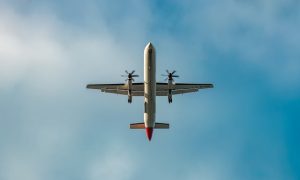
Have you heard of manifold pressure? The engine power of piston-driven airplanes can vary. Pilots may increase the engine power immediately after taking off to achieve cruising speed, or they may decrease engine power to slow down immediately before landing. Manifold pressure provides insight into the engine power of piston-driven airplanes so that pilots can make the necessary adjustments.
What Is Manifold Pressure?
Manifold pressure represents the pressure of the air-fuel mixture in an engine’s intake manifold. It’s typically measured in inches of mercury (inHg). The greater the pressure in the intake manifold, the higher the engine’s manifold pressure.
How to Read Manifold Pressure
Most piston-driven airplanes feature a manifold pressure gauge. Located in the cockpit, manifold pressure gauges are typically small and round. They reveal the pressure of the air-fuel mixture in the engine’s or engines’ intake manifold.
Opening the throttle will cause the manifold pressure to increase. The gauge’s needle will move to the right, representing a higher manifold pressure. Closing the throttle, on the other hand, will cause the manifold pressure to decrease. The gauge’s needle will then move to the left, indicating a lower manifold pressure.
The Science Behind Manifold Pressure
Piston-driven airplanes feature piston engines. Similar to automotive engines, piston aircraft engines create a suction force to pull in air through a narrow passage known as an intake manifold. The amount of air drawn through the intake manifold varies depending on the throttle setting.
A high throttle setting will result in more air being drawn and squeezed into the engine via the intake manifold. In turn, the engine’s manifold pressure will increase. When the throttle is fully open, for instance, the manifold pressure may be 29 to 30 inHg. When idling, the manifold pressure may be just 12 to 15 inHg.
How Altitude Affects Manifold Pressure
There’s a correlation between the altitude at which an airplane flies and its manifold pressure. As an airplane climbs, its manifold pressure will typically decrease — assuming the pilot doesn’t manually increase the throttle. When descending, the manifold pressure will typically increase.
Altitude and manifold pressure go hand in hand because of air density. The air is less dense at high altitudes than at low altitudes. Therefore, engines can’t draw in as much air, resulting in lower manifold pressure. To overcome this challenge, though, some piston-driven airplanes use turbochargers to further compress the thin air at high altitudes.



